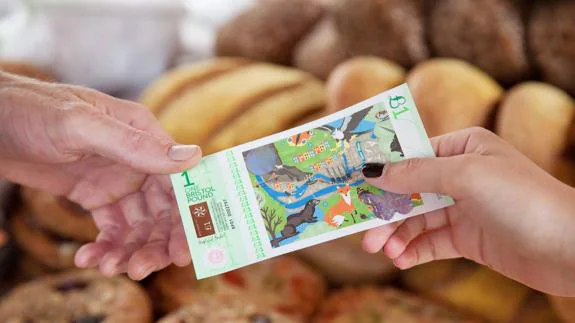

Sections
Highlight

Lucía palacios
Tuesday, 17 January 2017, 09:12
Compartir
They are not legal tender, but they arrived on the scene with the idea of making society fairer and, although there are no official figures, it seems there are about 200 of them all over the country. They are the local or social currencies, an alternative payment method to the euro or even a complementary one.
This week the mayor of Barcelona, Ada Colau, announced that she plans to fulfil her election pledge to introduce one in the city. After a pilot scheme, it will be implemented definitively in 2019. So far, it is not known whether this will be a virtual or physical currency, what it will be called or how it will be used, although the mayor has indicated that it could be used to pay grants or micro-loans, part of civil servants salaries or pay suppliers invoices. Her objective, however, is clear: To support local business and ensure that wealth and employment stay in the city.
Another town in Catalonia, Santa Coloma de Gramenet, is already preparing a similar currency which will come into circulation next year to channel public spending. Again, the objective is to boost local business and develop a more social society.
To involve local people, the council has started a campaign to name the currency: the winner will receive a cheque equivalent to 500 euros to spend in businesses which are taking part in the project. What is unusual is that this town has received a grant of just over 130,000 euros from the EU to set up this complementary payment system.
The small and medium business association of Catalonia, Pimec, is sceptical about these projects. Were not against them, because anything that helps local business is good, but we dont see them as anything wonderful, explains Álex Goñi, the president of Pimec Comercio. He is also concerned about the legality of civil servants having to receive part of their salary in this form.
In fact, dozens of local currencies are being used in Spain, although with less administrative support than in these two cases. Usually, they are not physical money; they function in the form of books in which the income and expenditure is noted.
The oldest is the zoquito, which has been used in Jerez de la Frontera for nearly a decade. It was the idea of a young Japanese woman who lived in the city and knew of similar schemes in her own country.
It began in 2007 but wasnt due to the crisis. It has an ideological value which can help to improve society, says Javier Saborido, the coordinator of the national conference on local money which will take place in Jerez next year. At present this virtual money has about 80 to 90 users, although as many as 200 people have used it. It is equal to one euro, but those behind the scheme prefer to say it is equivalent to a cup of coffee.
The res and the turuta
The most popular local money is to be found in Catalonia, in Gerona, where the res, which was created nearly 20 years ago in Belgium, began to be used in 2012. It is currently used by more than 500 shops and around 1,000 users. In the town of Vilanova i la Geltrú, another initiative is used by 350 people and 35 shops. It is called the turuta, and began in 2010 at the request of a group of local residents. The henar, the money which began in Alcalá de Henares last year, already has an app and 200 users, and in the Basque Country, there are local currencies such as the ekhi and txantxi.
Elsewhere in Spain, it is possible to find arquitos, oliva, chavico, el camaleón, espronceda, salero, mora, and canicarana. They are initiatives on a smaller scale, but are proving increasingly popular.
Publicidad
Publicidad
Publicidad
Publicidad
Reporta un error en esta noticia
Necesitas ser suscriptor para poder votar.